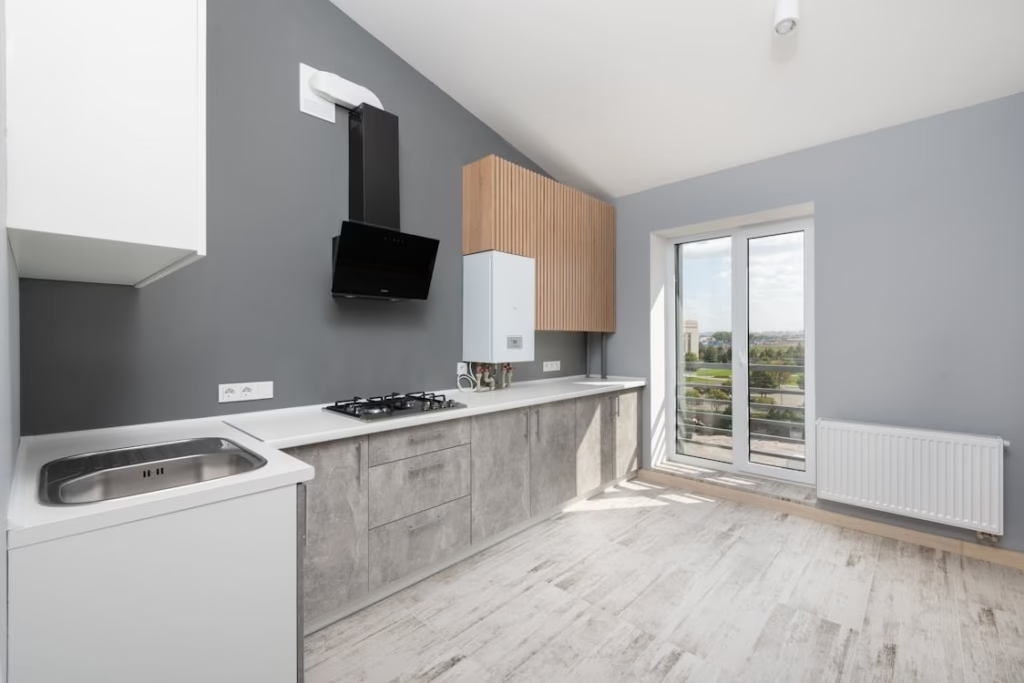Introduction
Exterior painting does more than enhance curb appeal—it protects your home from the harsh realities of weather, moisture, sun exposure, and age. But when the process is rushed, improperly planned, or poorly executed, the results can be more damaging than beneficial.
The wrong paint job won’t just fade or peel—it can trap moisture, encourage decay, and shorten the lifespan of your siding, trim, and other surfaces. Whether you’re updating your exterior for a fresh look or performing routine upkeep, knowing what not to do is just as important as knowing the right techniques.
Avoiding these common mistakes ensures your home stays protected, beautiful, and structurally sound for years to come. Brands like MasterCraft Coatings understand that proper exterior painting is part craftsmanship, part science—and that each step matters.
1. Skipping Proper Surface Preparation
One of the biggest and most frequent missteps in exterior painting is rushing into the job without prepping the surface. Paint needs a clean, stable foundation to bond properly. Dirt, chalk, mildew, and old flaking paint will compromise adhesion and lead to early failure.
What to do instead:
- Power wash all exterior surfaces before painting.
- Scrape and sand any peeling or blistered paint.
- Repair or replace damaged wood and siding before coating.
- Use caulk to seal cracks and gaps around trim, doors, and windows.
Skipping this prep can cause paint to bubble, crack, or peel within a year—undermining your investment.
2. Choosing the Wrong Time or Weather Conditions
Temperature and humidity directly affect how paint dries and adheres. Painting under poor weather conditions often results in streaking, slow drying, or a chalky, uneven surface.
What to do instead:
- Paint during mild weather (ideally between 50°F and 85°F).
- Avoid painting during rain, high humidity, or direct sunlight.
- Monitor temperature changes; cold nights after a warm day can interfere with curing.
Exterior painting requires patience and planning. Rushing to complete the job before a storm or heatwave can undo all your efforts.
3. Using Low-Quality or Incompatible Paint
Not all paint is created equal—especially when it comes to outdoor use. Some paints may not be suitable for your home’s materials, local climate, or desired finish.
What to do instead:
- Select exterior-grade paints formulated for resistance to UV rays, moisture, and temperature fluctuations.
- Match the paint type to the surface (e.g., masonry vs. wood siding).
- Stick with well-reviewed, high-performance products from reputable brands.
Using cheap paint may save money upfront, but it usually means repainting sooner, dealing with faster color fading, and battling moisture intrusion.
4. Ignoring Primer When It’s Needed
Primer isn’t always optional. It plays a crucial role in sealing surfaces, blocking stains, and helping paint adhere evenly. Skipping primer, especially on raw wood, patched areas, or stained surfaces, can reduce the paint’s life expectancy.
What to do instead:
- Prime all bare wood, patched areas, or previously unpainted surfaces.
- Use bonding primers on glossy finishes or challenging surfaces.
- Choose stain-blocking primers when covering dark or water-stained areas.
Even if your paint is labeled “self-priming,” it’s not a replacement for dedicated primer on difficult surfaces.
5. Inconsistent Application Techniques
How paint is applied is just as important as what kind is used. Inconsistent technique leads to lap marks, uneven coverage, drips, and flashing.
What to do instead:
- Apply paint with consistent brush strokes or roller direction.
- Use multiple thin coats rather than one heavy layer.
- Maintain a wet edge to prevent visible overlaps.
An experienced painting company understands the importance of uniform coverage and will take the time to apply paint with care and consistency.
6. Overlooking the Importance of Color Selection
Choosing exterior colors is more than a style decision. Certain hues perform better in various environments and impact how your home retains heat or resists UV damage.
What to do instead:
- Use light-reflective colors in hot climates to reduce heat absorption.
- Choose fade-resistant tones if your home faces prolonged sun exposure.
- Coordinate with your neighborhood’s aesthetic to enhance resale value.
Poor color choices not only clash visually but can shorten the life of the paint and decrease your home’s market appeal.
7. Painting Over Moist or Damaged Surfaces
Trapped moisture is one of the fastest ways to ruin an exterior painting job. Painting over damp wood or siding locks in water that can cause bubbling, peeling, and rot.
What to do instead:
- Let all surfaces dry thoroughly after washing or rainfall.
- Address any water damage, mold, or mildew before painting.
- Use moisture meters to check hidden dampness, especially in shaded or north-facing areas.
Protecting your home through exterior painting means preventing problems before they develop—not sealing them in.
8. Neglecting Trim, Fascia, and Small Details
Many homeowners focus on siding and large surfaces but neglect the details. Trim, fascia boards, soffits, and shutters also need attention. Ignoring these components leads to a patchy look and missed opportunities to protect vulnerable areas.
What to do instead:
- Use contrasting or complementary colors to highlight architectural features.
- Paint all exterior wood elements, even those partially hidden from view.
- Caulk and seal joints around trim for added protection from water intrusion.
Neglected trim is one of the first places where weather damage begins. Comprehensive painting ensures total protection.
9. Not Accounting for Maintenance Needs
Every painted exterior eventually needs upkeep. Failing to anticipate future maintenance requirements sets the stage for premature wear and repeat projects.
What to do instead:
- Keep leftover paint for touch-ups in a clearly labeled, sealed container.
- Schedule routine inspections to catch early signs of wear.
- Power wash your exterior annually to remove buildup and prolong paint life.
Even the best paint won’t last forever—but good maintenance extends its lifespan dramatically.
10. Underestimating the Value of Professional Help
Many exterior painting failures happen not because of lack of effort, but because of lack of expertise. Hiring professionals brings experience, equipment, and attention to detail that’s difficult to replicate.
Brands like MasterCraft Coatings understand the complexity of painting in real-world conditions—from surface prep to color selection and application. For homeowners who want a finish that performs as well as it looks, partnering with experts can make all the difference.
Conclusion
Exterior painting isn’t just about aesthetics—it’s a critical part of home preservation. Each step, from prep work to final coat, plays a role in determining how long your paint will last and how well it will protect your home.
Avoiding common pitfalls like poor timing, weak products, or improper application can save you thousands in repairs and repainting. Whether you’re taking on the project yourself or working with a professional painting company, knowledge is your greatest tool.
MasterCraft Coatings believes that great results come from great preparation and precision. By taking the time to do things right—and avoiding the shortcuts that lead to early failure—you ensure that your exterior paint not only enhances your home, but also safeguards it.



